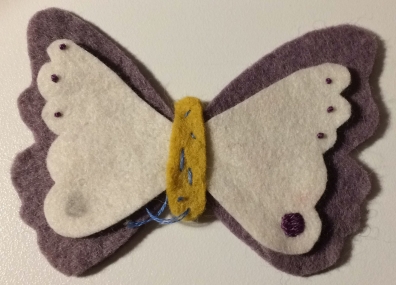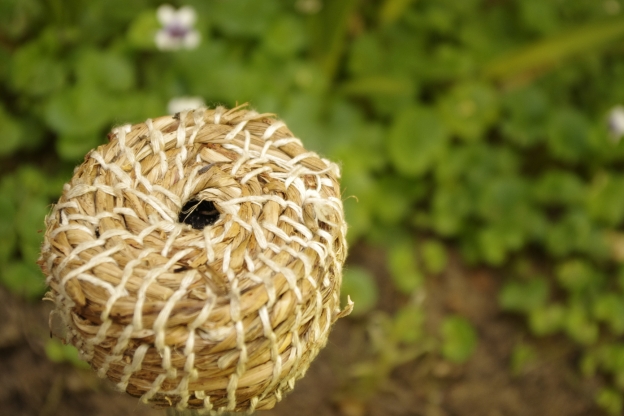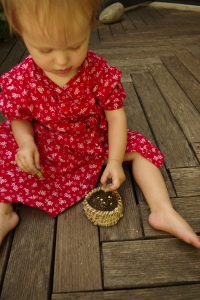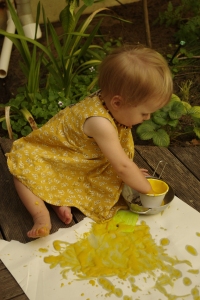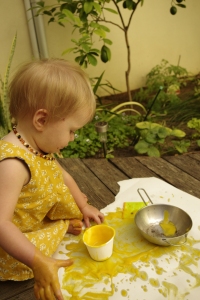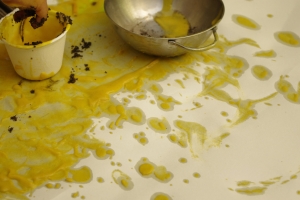Many years ago I learnt to make knitted chickens during my Waldorf/Steiner teacher training. This is a quick and easy craft idea that can be used as a last-minute gift or an addition for the nature table this time of year. It’s also really great for using up your odds-and-ends yarn ends stash (I know, I just can’t bring myself to throw them out either!)

The basic pattern is just a knitted square using garter stitch. This project is also perfect for a beginning knitter and does not really require counting or measuring.
I suggest starting with a smaller square – I often cast on 10-20 stitches using size 4-5 needles and corresponding wool in a ‘chicken’ colour. I knit until the piece looks like a square (you can fold the square in half diagonally to get more accuracy, matching length and width) and then cast off. Keep the yarn end long to stitch the chicken up.
I fold the complete square diagonally to make a triangle and use the left over yarn end to stitch up one side to the ‘right angle’ point of the triangle, and then a little more on the next seam. I leave a space through which to stuff the chicken, making sure to get stuffing evenly (not too full) to the ends of the triangle. I then sew the rest of the seam up.
If there is still a yarn end long enough, I guide the needle back through the body to the ‘right angle’ point. I secure it with a knot at that point and then bring the thread through the stuffed body out the back and back down again to the secured point. I secure the yarn again and this creates a dip in the back. I then weave the yarn in and cut it.

To make the beak and other wobbly bits (they have a proper name right?) I use a crochet hook and another colour of yarn.
To be honest, I’m not a crochet expert, so explanations of my haphazard approach are rather futile – I just crochet until it looks about right. Maybe you are able to glean something from these photos? Sorry if this doesn’t really help…
And just to show what you can do with some embellishments and different coloured yarn, I made a rooster as well this year!

As a basic guide with the rooster, I gradually changed from grey to green on one corner of a larger knitted square. Once I’d sewn it together (same as the chicken) I crocheted a series of chain loops at the tail end and added a few more flat chains where the wings are for extra colour.
I also found this blog post with more detail and a slightly different approach.
This really is a great last-minute make and a stash-buster. Enjoy making!




